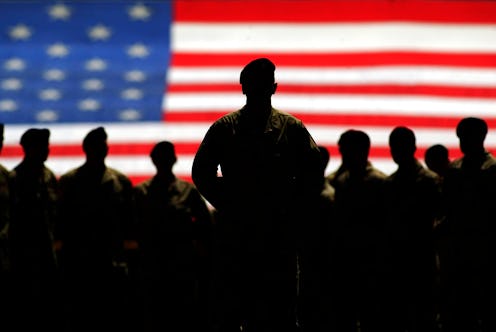News
The Number Of Rape Reports In The Military Is At The Highest It's Ever Been

The latest report from the military points to a rising number of sexual assaults during the past decade, but when you dig deeper into the numbers, it's more complicated. What the military is tracking is the number of reported cases of sexual assaults, and that is in fact growing. The total number of assaults, though, would appear to be decreasing. According to the military's report on sexual assault, reporting has gone up.
The Department of Defense Annual Report on Sexual Assault in the Military says that there were 6,769 reports of sexual assault that included a service member in fiscal year 2017. That's the highest number since the data was first recorded by fiscal year in 2007. To compare, only 2,688 sexual assaults were reported a decade prior that year.
Of those 6,769 from fiscal year 2017, 5,277 were victims who reported a sexual assault at some point during their military service. That's up by 10 percent from the year prior. But this seems to be a result of a changing culture — in and out of the military — and systemic changes that resulted in better "victim support, military justice, and prevention work." In 2016, the military estimates one in three sexual assaults were reported, up from just 1 in 14 in 2006.
Obviously the report is not good news — even if more people are coming forward. Sen. Kirsten Gillibrand tweeted that the the Department of Defence has "failed at their mission" in enforcing "zero tolerance" for sexual assaults. Even one is too many.
What will be really interesting, though, is next year. The current report does not take into consideration changes from the #MeToo movement, which came to the country's collective consciousness in October. The military's fiscal year 2017 ended on Sep. 30. If reporting grows as a result, it will be reflected in fiscal year 2018.
Also, the estimate of the percentage of sexual assaults that were reported in 2017 is unavailable. The survey used to figure that amount — the 1 in 3 — is only done every other year. The Workplace and Gender Relations Survey of Active Duty Members will be administered again in 2018, allowing a better comparison between the total number of sexual assaults and those that are reported.
Only next year, therefore, can you be sure that the total number has continued to decrease, and that the uptick in reports is solely thanks to victims speaking out.
Meanwhile, far more disturbingly, the number of sexual assaults receiving appropriate disciplinary action also needs to be addressed. There was disciplinary action taken in just 62 percent of the cases against accused service members in fiscal year 2017. The report pointed to "insufficient evidence of an offense to prosecute, a victim declining to participate in the justice proceedings, or other reasons" to explain the low number.
Some in the military have already spoken out about the #MeToo movement, a potential sign for statistics to come. More than 220 women who work in national security wrote a letter in December condemning the abuses "born of imbalances of power and environments that permit such practices while silencing and shaming their survivors":
This is not just a problem in Hollywood, Silicon Valley, newsrooms or Congress. It is everywhere. These abuses are born of imbalances of power and environments that permit such practices while silencing and shaming their survivors. Indeed, in our field, women comprise a small fraction of the senior leadership roles — 30% or fewer in most federal agencies.
In the military, women in leadership can be even harder to come by. Just 17 percent of active-duty officers were female in 2015. The women who wrote the #MeTooNatSec letter, as it was titled, called on the federal government and military to institute several policies including clear leadership, multiple reporting channels, and mandatory exit interviews.
This and more must be done in the military to force all these statistics in the right direction.